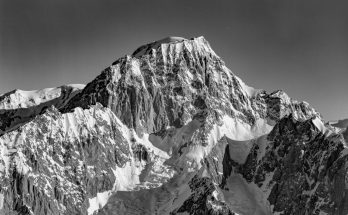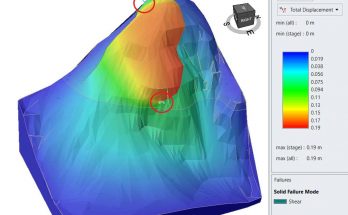Murielle Voutaz
Direction: Prof. Michel Jaboyedoff
Rapporteur: Prof. Jean-Luc Epard
Suivi: Andrea Pedrazzini, Battista Matasci
Deep-seated gravitational slope deformations (DSGSD) are poorly understood. Induced by gravity deformation mechanisms, the susceptibility of DGPV increases with many factors; the most important are decompressing ice, seismic and regional tectonics.
The relationship between regional tectonics and DSGSD is studied in this work through the characterization of morphostructures produced by rock slope failures and DSGSD located on the left bank of Haut-Valais. The direction of these morphostructures was compared with the direction of morphological lineaments of the same area. It shows two main directions of lineaments: NE/SW and NW/SE. The first one corresponds to the direction of the main schistosity, related to the second phase of deformation described by Steck (1984). The morphostructures of rock slope failures and DSGSD show also this direction, confirming the influence of tectonics on this kind of instabilities. The second direction of lineaments can be linked with the expansion phase that occurs in the central Alps from the Miocene.
The DSGSD of Wasenalp has developed significant morphostructures: big scarps with a throw of more than 10 m which share the pasture of Wase and two rock glaciers from east to west and counterscarps which induced horst and grabens morphology in the central part of the slope. Significant signs of instability also characterize the toe of the DSGSD including paleolandslides and still active landslides.
Three sagging areas are also located on the DGPV: the sagging area of Mäderhorn, the sagging area of Scheen Biel and the sagging area of Hohture. While the first two have only little morphostructures, the sagging area of Hohture shows serious gravity forms, including counterscarps and tensile cracks parallel to the crest line.
Besides the study of morphostructures, DGPV analysis was performed on the basis of structural data of the rock mass. This method allowed identifying the orientation of the main schistosity and 6 sets of discontinuities. At least two of the joint sets, J1 and J6, are directly related to the extension tectonics of the area. The measurements of the main schistosity have also revealed a significant flexural toppling in the lower part of the DSGSD.
The analysis of the deformation is carried out from the geomorphological analysis and the structural characterization of the DSGSD; several assumptions of deformation were developed to understand the DSGSD. The more consistent one define a deep shearing zone with kink structures which results from the diffusion in depth of the shear constraints from the main scarps. From this scarp the deformation follows first the main schistosity plans and then spread in the shearing zone. The flexural toppling results from the deep shearing zone.


